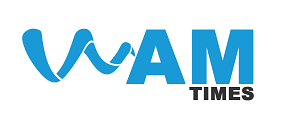We’re at a crossroads. As we recover from the pandemic, businesses must adapt to this new landscape in order for them not only to survive but thrive as well.
The next phase will be marked by rapid change and innovation so now is the time to start looking ahead of what’s coming around the corner or risk being left behind.
In the aftermath of COVID-19, business leaders who explore new opportunities and capitalize on them now will have an edge over competitors.
Revising your risk assessment
COVID-19 marks a shift in the way that employers have to identify and assess workplace risks. If there is any change, they are obligated to take into consideration all hazards. Employers need to make sure not just for now but also long-term of what might come next and how it can be handled better going forward.
Businesses that take these steps now will be well-positioned to capitalize more effectively on the opportunities arising in post-COVID 19 recovery – and continue winning their marketplaces as greater certainty and stability return.
Make sure to update your COVID-19 risk assessment by reviewing the most recent information from public officials in order to identify any new hazards. You should also make a detailed plan for how you’ll handle different situations that could arise if there is an outbreak of COVID-19 near where you live or work.
Maintaining an immaculate workplace
A clean workplace is vital to the health of your employees, but it becomes even more important when you neglect to disinfect a surface. This could put them in contact with life-threatening Coronavirus that they otherwise would not have been exposed to had their environment been as sanitary as possible.
As the day winds down, it is important for team members to take responsibility for their workstations. This includes taking 5 minutes before they leave on a shift and cleaning all surfaces that have been in contact with throughout the day – mouses, keyboards, armrests, or seats of chairs and buttons on devices like phones or tablets.
You can clean your surfaces using disinfecting wipes or spray that you apply on a disposable cloth. Make sure to use products that come pre-packaged with the solution, so they don’t contaminate other areas of your workplace and are completely thrown away after being used for cleaning.
In addition, it’s wise to schedule professional deep cleaning. Although wiping down counters after each use and thoroughly scrubbing at the end of every day is a great way to control the spread of viruses, you can’t be entirely confident that all have been killed without expert help.
Regular Hand Washing
Regular hand washing is one of the most effective ways that you can protect yourself and others from coronavirus. This includes using soap or antibacterial gel to thoroughly wash your hands, which kills any viruses on them. To reduce the risk for all employees, be sure everyone regularly washes their hands. Create a six-step process for washing hands that is both interesting and easy to reference by printing out Minster’s infographic and putting it on bulletin boards around the office.
Importance of hand-washing is a crucial safety measure. It’s important to remember that not only should employees wash their hands when they return from public outings, but also before entering the office and eating or cooking anything in it too! They must be cautious about washing after handling cash as well since Coronavirus can easily spread throughout an entire building if one employee doesn’t practice proper hygiene habits.
Space management
One of the most important factors in designing a workplace for the new normal is space management. The future of the workplace is yet to be fully realized, but one thing that can surely be counted on: there will always need to be space for people.
The days where a company could have one desk per employee are over; instead, expect an increase in diverse spaces like benching and breakout areas as well as agile zones with individualized furniture arrangements designed around each person’s needs. Space isn’t set anymore – it changes depending on what employees need at any given time.
As the prevalence of workstation fixed desks moves from offices to cafeterias and libraries, personal workspaces will increasingly become more fluid and flexible so they can change as needed
Agile workforce
After COVID, there’s a higher chance that we’ll see more agile workers. We’ll see employees who had grown comfortable in one area of work, spreading out and exploring other areas so they’re not clustered together, resulting in newfound agility. Businesses that are closed off to innovation will eventually stagnate, but employees who are forced out of their comfort zone in the workplace might find that they have various skills and can be productive throughout an office setting.
The way we work is changing and it will continue to change. We’re all becoming accustomed to video chats, meeting remotely with people from around the world on a regular basis without actually having an in-person conversation or even seeing their faces. This eliminates time spent looking for open conference rooms where you can host your meetings when there are so many other options available now like Zoom Meetings that make this process easier than ever before as they let employees meet up virtually anywhere at any given moment! It’s about creating new opportunities and eliminating wasted time trying to find places of business while also saving money by not using expensive office space.
Remote work is here to stay
It is predicted that the number of people who work remotely will continue to grow as technology advances. This means office space needs are changing and companies need to be prepared for this change in order to provide an environment conducive to productivity, comfortability, and efficiency
Employers globally expect remote work to become an increasingly common method of employment, and as such have started using it as a permanent part of their workforce.
The future of office spaces is all about fostering a culture and creativity with the latest in design, technology, lighting. Gone are the days when people work at their desks for hours on end or grunt as they head off to see some clients face-to-face – it’s all gone digital! Spaces will be interactive environments where ideas can flow freely.







